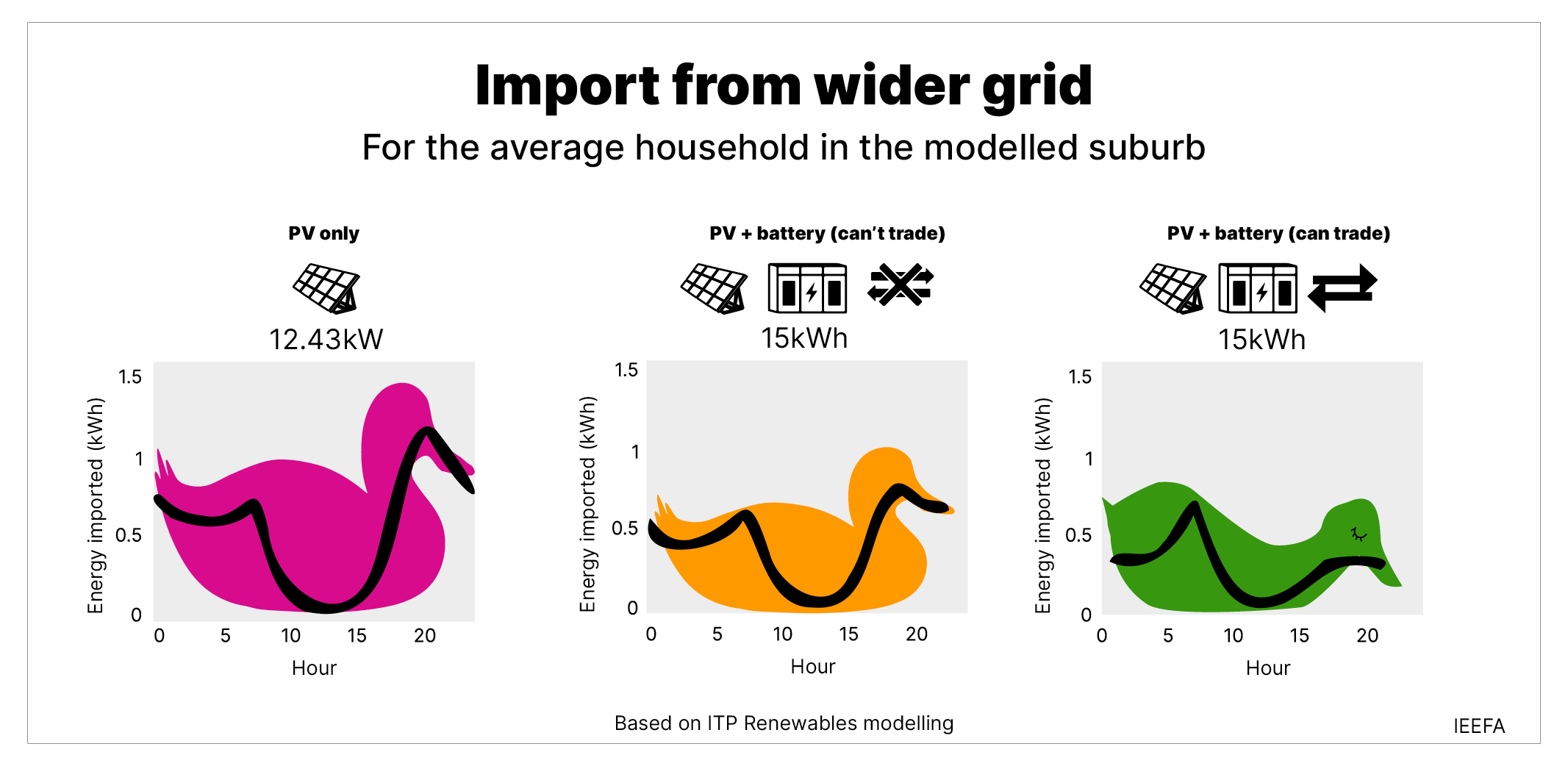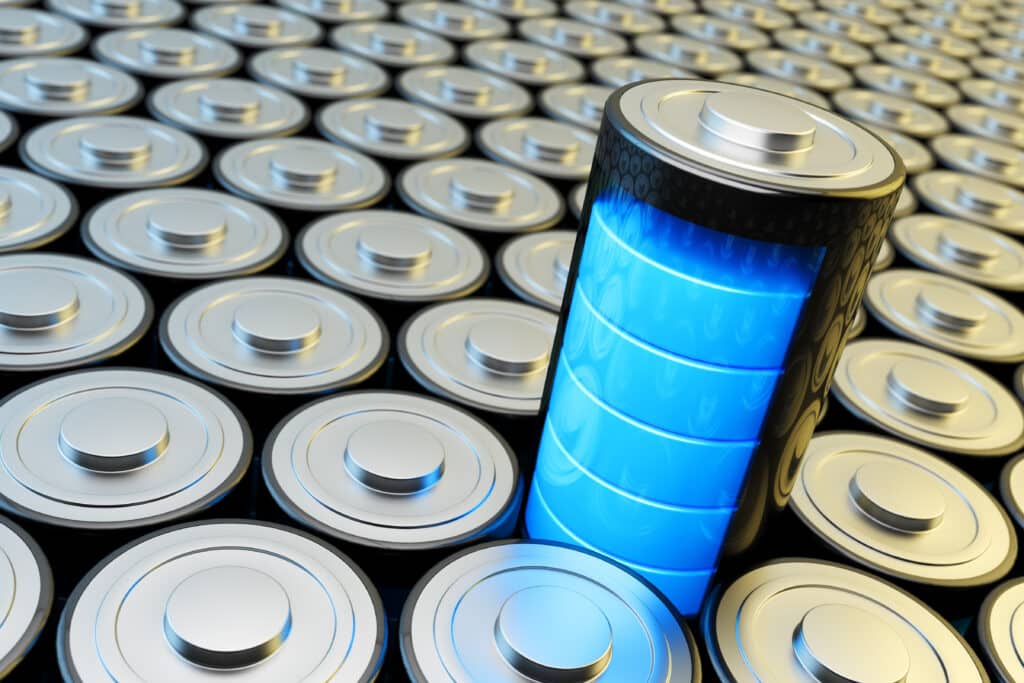
Almost 2 years ago, I alerted the CleanTechnica community to Project Symphony in Western Australia. It’s time for an encore, but first, a reprise. Project Symphony is the brainchild of Dr Andrew Mears. Its aim is to bring energy security to the edges of the grid. It uses a distributed energy management technology platform to make better use of existing energy-producing assets. Dr Mears pioneered the technology while working with isolated communities in the Kalahari Desert of Botswana. According to modeling by Dr Gabrielle Kuiper, it could “put the duck (curve) to sleep.”
As well as being applied in the sparsely populated Northern Territory (the “never never”), Project Symphony is being used in country and urban areas of Western Australia — Perth, to be precise.
For example, a newly commissioned community battery will be integrated into the Project Symphony pilot VPP in southeastern Perth. The Harrisdale 1.34 MW battery will store the excess power generated by the local rooftop solar systems during the day and be available for access at peak hour.
For the first time in Western Australia’s grid, a community battery will be integrated with customer-owned batteries. It is expected that this expansion of the pilot virtual power plant (VPP) will better manage the massive amount of solar available during the day in Western Australia, and perhaps even put the duck to sleep. Note that the Western Australia grid is not linked to Australia’s more populous eastern coast.
Both South Australia and Western Australia have instigated moves to allow market operators such as AEMO to remotely manage rooftop solar systems in order to manage grid stability. These systems can be switched off if too much power is coming into the grid. It is expected that this tool of last resort will only be used for short periods of time if demand is critically low.
VPP’s like Project Symphony linked to community and privately owned batteries should minimise the need for such measures. The VPP is backed by the Australian Renewable Energy Agency. It manages the power supply of 900 clean energy assets — solar and home batteries across 500 households and businesses in Perth’s Southern River area. Now it has a community battery as well.
“Project Symphony’s new community battery will provide valuable insights into how we can unlock greater economic and environmental benefits … as we continue to transform the energy sector on our way to net zero,” said state energy minister Bill Johnston.
“In the face of a rapidly changing energy industry, customers’ rooftop solar systems, batteries, air conditioning and community batteries orchestrated together can play an important role in enabling the greater connection of renewables and the continued running of a secure and stable electricity system.”
In the meantime, the debates continue as to the best way forward for Australia’s transition to renewables. This must be done in such a way that customers receive the power they need and the grid remains stable. Dr Mears continues to argue that more investment needs to be made in software, so as to get the best value from the renewable assets that are already in play. With the massive penetration of rooftop solar in Australia, it would be better to find a way to use it, rather than curtail it. Use it to put the duck to sleep.
At last month’s Australian Energy Week Conference, held in Melbourne, Dr Mears argued for a re-engineering of the grid so that AEMO could “nail the magnitude of infrastructure required to support the energy transition.” He “questioned the AEMO’s lack of consideration for distributed energy resources (DER) in their 2022 Integrated System Plan (ISP).”
Australian Energy Week is the major annual conference and expo for the entire energy supply chain, bringing together generators, networks, retailers, end users, and government to help shape the energy transition.
AEMO’s CEO Daniel Westerman conceded that utility-sized renewables are not being built fast enough and that rooftop solar could provide up to 25% of grid needs. Dr Mears referred to “modelling undertaken by ITP Renewables and commissioned and published by Gabrielle Kuiper where software and distributed networks are used as an infrastructure alternative to new poles and wires.”
This modelling found that “rooftop solar plus battery trading reduces the 4-8 pm wholesale market evening peak by an impressive 67–92%. In addition to this, where local ‘trading’ is made ‘frictionless’, household batteries reduce the average summer network peak by 64%.” These flows would be best facilitated by software rather than building more transmission lines.
Dr Mears’ SwitchDin has proposed a National Virtual Power Plant (VPP) Strategy to the federal government which would enable households and businesses to access the untapped value in their energy-producing assets. The plan is to take the symphony national.
Dr Gabrielle Kuiper calls this putting the duck curve to sleep – see the graph here:
ITP renewables modelled what it would be like for the electricity system when we reach 100% DER. “We know that eventually every rooftop in the National Electricity Market (NEM) that can have solar, will. We know solar households will most likely have batteries, and potentially will be able to trade electricity easily with their neighbours. They will also be all electric, with flexible demand in the form of controlled loads able to be time-shifted, and have electric vehicles (EVs) that can charge in the daytime or overnight. We’ll also have community batteries in some form.
“The most significant finding from this fresh approach is that rooftop solar plus batteries will put the famous solar-created supply-demand duck curve to sleep.”
A sleeping duck curve means no excessive solar supply in the middle of the day (thus no curtailment) and power available for the evening, eliminating peak hour. “Across all the modelled scenarios, rooftop solar plus battery trading reduces the 4–8pm wholesale market evening peak by 67–92%.” This will have significant impacts on the revenues of traditional generators. Gas peakers will no longer be needed.
“How much and how fast the duck sleeps will depend a lot on the number and size of batteries and EVs per household and the regulations for trading this capacity. The more batteries and flexible load in the system, the greater the likelihood of a sleeping duck — that is, a flatter grid demand/supply curve.”
As one of our readers commented on my first article: “Amazing. Norway is the proving ground for an EV future, and Australia will show the world how clean, decentralised power is the future.” But it is a tough time for decision makers. Time to tune the orchestra and put the duck to sleep.
I don’t like paywalls. You don’t like paywalls. Who likes paywalls? Here at CleanTechnica, we implemented a limited paywall for a while, but it always felt wrong — and it was always tough to decide what we should put behind there. In theory, your most exclusive and best content goes behind a paywall. But then fewer people read it! We just don’t like paywalls, and so we’ve decided to ditch ours. Unfortunately, the media business is still a tough, cut-throat business with tiny margins. It’s a never-ending Olympic challenge to stay above water or even perhaps — gasp — grow. So …





